by Timothy A. Pearce and Mandi Lyon
When a snail needs a larger shell, it simply grows its shell larger, continuing the spiral. However, when a hermit crab needs a larger shell, it must find a larger shell to move into. Consequently, hermit crabs depend on snails to provide housing. Hermit crabs have soft abdomens, which are vulnerable to predators, so they keep their abdomens protected inside of snail shells.
There are amusing stories of several hermit crabs lining up in order of shell size, in a type of pecking order. When a new shell becomes available, the hermit crab highest on the pecking order holds onto the new shell and keeps a tight grip on its current shell as well. It tries out the new shell, and if it is an improvement, the crab will quickly move from one shell to the other, releasing the old shell. The old shell then becomes available to the next crab in the pecking order who examines it, and so on down the line.
Apparently, hermit crabs don’t kill snails to get the shells, but instead appear to move into already empty shells.
This series of photos was taken in the evening of August 12, 2017, at Amherst Shore Provincial Park on the Northumberland Strait in Nova Scotia. The photos show a hermit crab wearing the shell of a Dog Whelk (Nucella lapillus) encountering a Spotted Northern Moonsnail (Lunatia triseriata). The entire interaction took about a minute or so. The hermit crab approaches (Fig. 1) and climbs onto the moon snail (Fig. 2). The snail pulls its body into its shell and blocks the shell opening with its horny operculum, like a door that shuts the opening tightly (Fig. 3). The crab flips the shell over and the reddish colored operculum is visible (Fig. 4). The crab probes into the aperture (Fig. 5). Then the crab walks away (Fig. 6), evidently convinced that the shell is not available.
It’s hard to tell whether the hermit crab feels crowded in its current shell; it looks fine to us, but maybe hermit crabs are always on the lookout for better accommodations. The crab approached from the snail’s backside, so perhaps the crab didn’t notice that the snail is alive. The crab flipped the shell over, probed into the aperture where it bumped into the operculum.
How fortunate to be able to witness such an interaction, and to have a camera to record the episode!
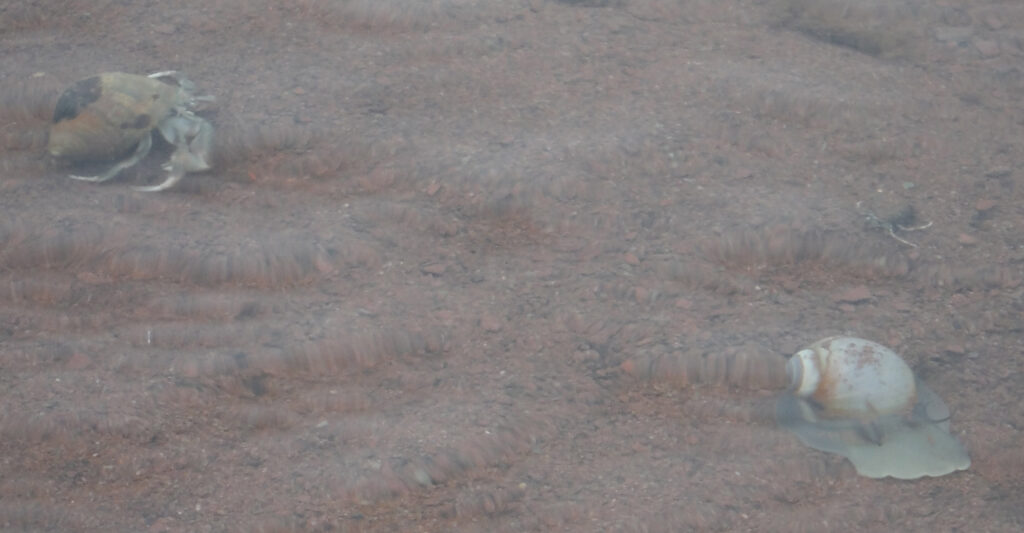
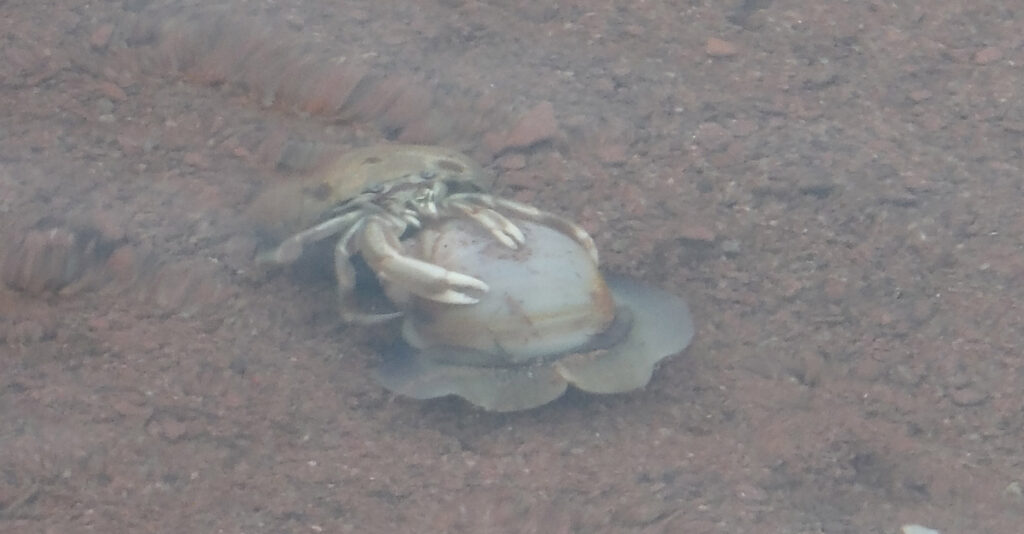
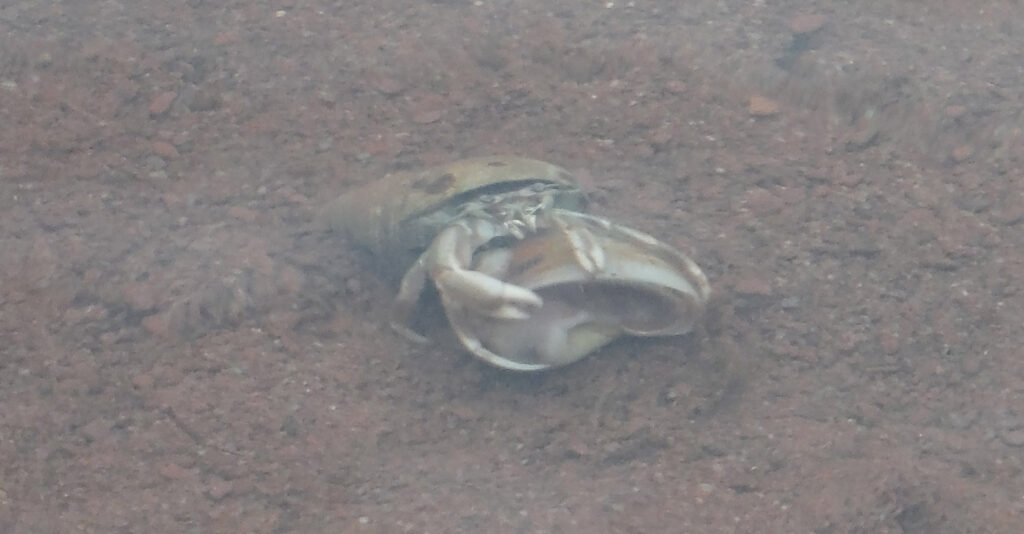
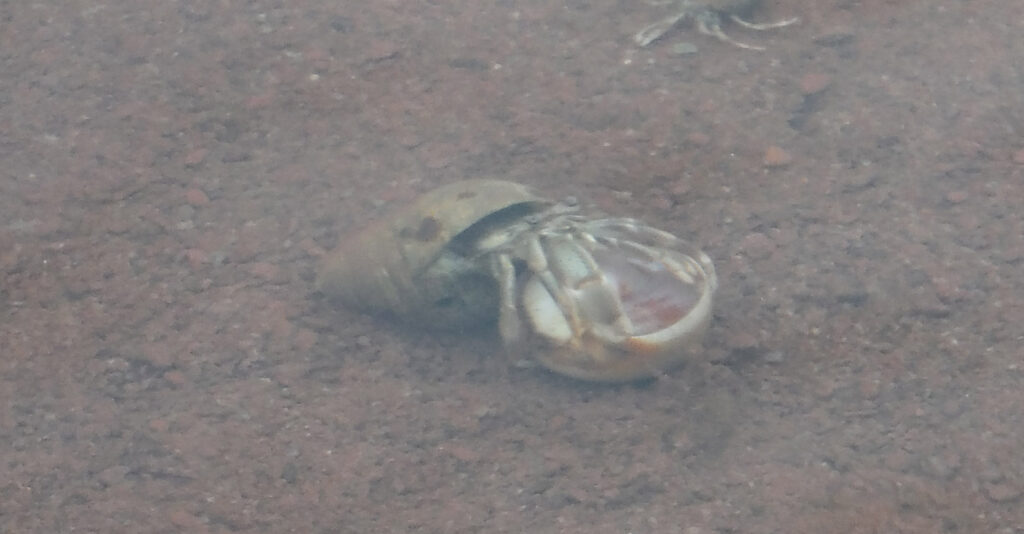
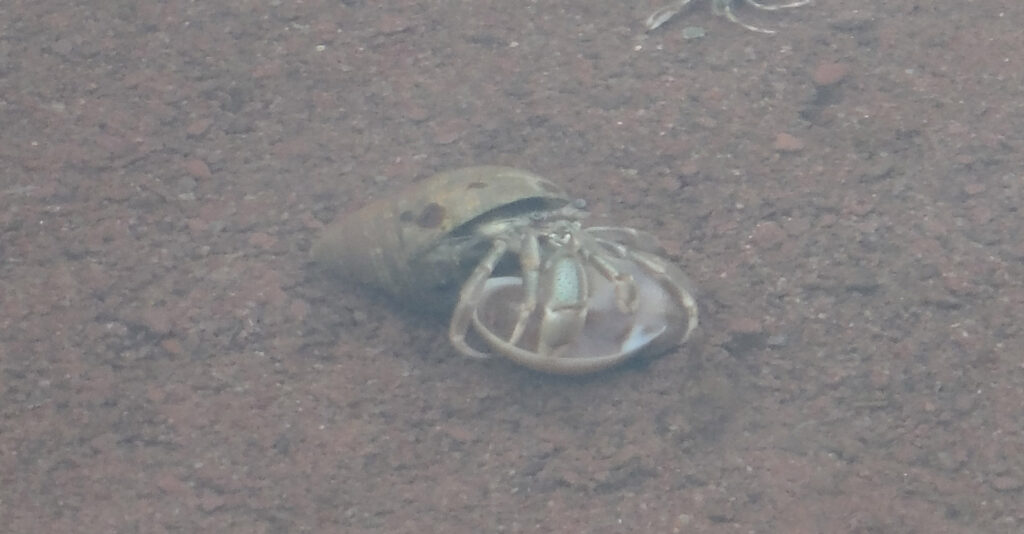

Mandi Lyon is the Program Manager for Schools & Groups and Timothy A. Pearce is Curator of Mollusks at Carnegie Museum of Natural History.
Related Content
Prozac and Caffeine in Our Wastewater: Effect on Freshwater Mollusks
Diet-wise, Snails are Like Cows, Not Bugs
Carnegie Museum of Natural History Blog Citation Information
Blog author: Lyon, Mandi; Pearce, Timothy A.Publication date: February 7, 2024
